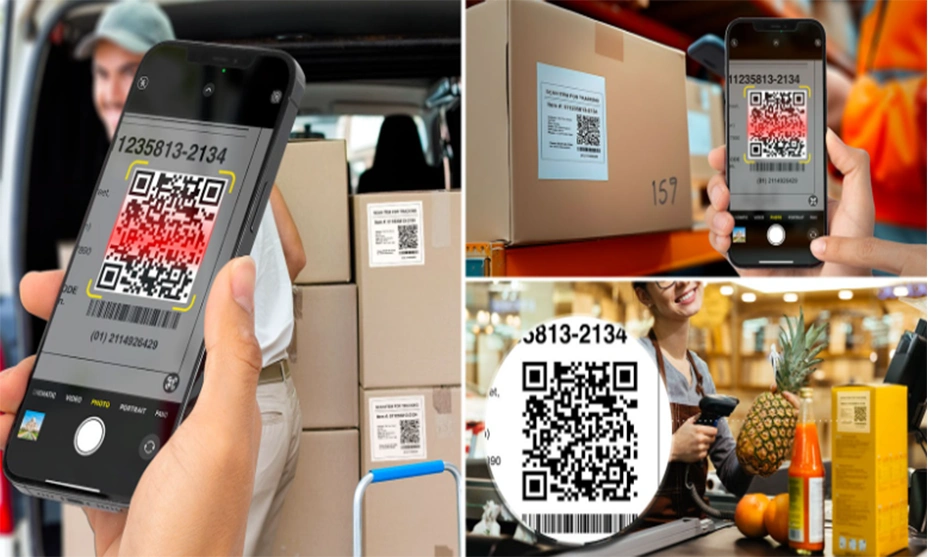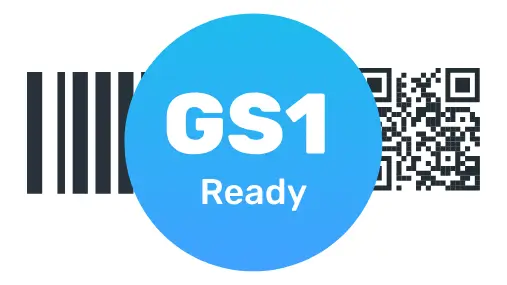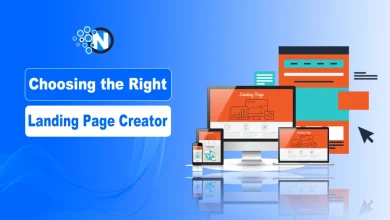Why GS1 QR Code for Supply Chain Are Better Than 1D Barcodes

Supply chains today rely on a mix of 1D barcodes, such as Universal Product Code (UPC), European Article Number (EAN), and GS1-128, each serving a different purpose.
UPC and EAN codes handle retail checkout, while GS1-128 is used for logistics and inventory tracking. It works, but let’s be honest – it’s a mess. Products often carry multiple barcodes, making labeling cluttered and scanning more complicated than it should be.
Using a GS1 QR code for supply chain efficiency simplifies this by consolidating multiple functions into one. Instead of juggling different barcodes, businesses can streamline operations, improve traceability, and provide real-time data access – all with a single scan.
Let’s first clarify what GS1 is and how it fits into the supply chain. That way, you will know the connection between 1D barcodes and 2D barcodes.
What is GS1’s Role in the Supply Chain?
Global Standards 1 is the global organization behind both 1D barcodes and 2D codes (such as QR codes and DataMatrix) in products. It sets global standards that ensure every product, shipment, and transaction can be identified and understood consistently.
GS1 helps enable efficient and transparent movement of goods by standardizing how information is captured and shared.
The 1D Barcode Problem
It’s very common for products to have multiple types of barcodes, each serving a specific purpose at different stages of the supply chain. While this system has worked for decades, it creates unnecessary complexity.
To elaborate, here’s how barcodes are typically catching attention now:
1. Retail Products:
- A consumer product carries a UPC or EAN barcode for point-of-sale scanning.
- Its shipping carton often features an Interleaved Two of Five (ITF-14) barcode for warehouse management.
- If batch numbers or expiration dates are needed, a GS1-128 barcode may also be included on shipping labels.
2. Industrial & Manufacturing:
- Code 39 or Code 128 often plays its part for internal tracking within factories.
- Once products are ready for distribution, ITF-14 or GS1-128 barcodes take over for shipment tracking.
Why So Many Barcodes?
The reliance on multiple barcodes comes down to:
- Different data requirements – Point-of-sale scanning only needs a product identifier, while supply chain tracking demands additional details.
- Environmental optimization – ITF-14, for instance, it is for easy printing on corrugated boxes.
- Stage-specific needs – Warehouses, logistics providers, and retailers each have unique scanning systems.
1. Scanning Inefficiencies
Because different systems aren’t designed to communicate seamlessly, several issues arise:
- Multiple scanning requirements – Different barcode formats require different scanners and software, adding complexity.
- Fragmented data flow – Information doesn’t always transfer smoothly between systems, leading to delays and inconsistencies.
- Unclear product location – Without a unified tracking system, knowing where a product is at any given moment can be difficult.
- Tracking errors – When data is scattered across different platforms, mistakes are more likely to occur, impacting inventory accuracy and shipment reliability.
These inefficiencies slow down operations, increase costs, and make end-to-end visibility harder to achieve.
Using a GS1 QR Code for Supply Chain Upgrades
The limitations of 1D barcodes are becoming more apparent as supply chains demand greater efficiency, accuracy, and real-time data exchange.
These QR codes, which follow the standard GS1 QR code guidelines, offer a solution by consolidating multiple data points into a single, scannable format while enhancing interoperability across different systems.
To ensure you generate compliant codes, you can develop your own based on GS1 guidelines or rely on trusted third-party GS1 QR code generator services.
1. More Data, Fewer Labels
Unlike traditional barcodes that can only hold basic identifiers like GTINs, using a GS1 QR code for supply chain management allows stakeholders to store and access multiple data elements in a single scan, including:
- GTIN (Global Trade Item Number) for product identification
- Batch numbers for traceability
- Expiration dates for perishable goods
- Serial numbers for item-level tracking
These QR codes reduce the need for multiple barcodes, streamline labeling, and improve scanning efficiency.
2. Omnidirectional Scanning & Error Correction
QR codes can be scanned from any angle, eliminating alignment issues common with 1D barcodes.
Their built-in error correction ensures that even if a portion of the code is damaged or obscured, it remains scannable. This feature improves reliability in warehouses, distribution centers, and retail environments.
3. Seamless Integration Across Systems
GS1 barcode QR codes are designed to work across various platforms, making them useful beyond just retail checkout. They integrate with:
- Point-of-sale (POS) systems for product identification
- Warehouse management systems (WMS) for inventory control
- Logistics and shipping platforms for real-time tracking
- Consumer smartphones for transparency and engagement
This cross-system compatibility reduces bottlenecks caused by fragmented barcode formats, enabling a more connected and efficient supply chain.
4. Connecting Physical Products to Digital Information
Beyond storing static data, the QR code supports GS1 Digital Link, transforming product packaging into a gateway to dynamic online content. Depending on the scanning context, a single QR code can provide:
- Product details at checkout
- Real-time traceability information for warehouses
- Direct access to recalls, authenticity verification, and customer engagement content via a smartphone
Benefits of GS1 QR Codes
QR codes cut through the clutter and inefficiencies of traditional barcoding by consolidating essential data into a single scan.
They make product tracking, compliance, and recall management faster and more accurate, reducing errors across the supply chain.

1. Less Label Clutter
Instead of juggling multiple 1D barcodes for different purposes, a single GS1 QR code holds everything -GTIN, batch number, expiration date, and more.
It simplifies labeling, reduces printing costs, and ensures all essential data is accessible in one scan.
2. Better Tracking
With these QR codes, tracking isn’t just about scanning – it’s about real-time visibility. Whether in manufacturing, warehousing, or retail, a single scan pulls up detailed product information, improving inventory control and minimizing blind spots in the supply chain.
3. Fewer Errors
Too many barcodes mean more chances for scanning mistakes. The QR code standardizes data into one format, reducing misreads, manual entry errors, and system inconsistencies. Fewer errors mean fewer disruptions.
4. Faster Recalls
When recalls happen, speed matters. These QR codes store batch and expiration data right in the code, allowing businesses to identify and pull affected products quickly.
No more scanning multiple codes or sorting through fragmented data – just a quick, precise data sharing and response.
5. Simplified Regulatory Compliance
Digital link QR codes make supply chains more efficient and help businesses stay compliant by embedding key product data directly into the code. Examples include:
- Digital Product Passports (DPPs): These QR codes can link to sustainability and composition details, supporting EU regulations on batteries, textiles, and other goods.
- Pharmaceutical Traceability (DSCSA): Serialization and lot tracking become seamless, ensuring compliance with strict medication tracking requirements.
- Food Safety Compliance (FSMA): Ingredient lists, allergen information, and handling instructions are instantly accessible, helping meet food safety regulations.
Make Supply Chains Smarter with GS1 Codes
Using a GS1 QR code for supply chain operations means cutting inefficiencies, reducing errors, and gaining real-time visibility – all in a single scan. Traditional 1D barcodes can’t keep up with the need for speed, accuracy, and seamless information-sharing.
This isn’t just an upgrade in labeling – it’s a smarter way to manage recalls, improve traceability, and streamline compliance. With GS1 Digital Link, every scan becomes an opportunity for better logistics and stronger consumer engagement.
The real question isn’t if you should switch – it’s how long your supply chain can afford to wait.




